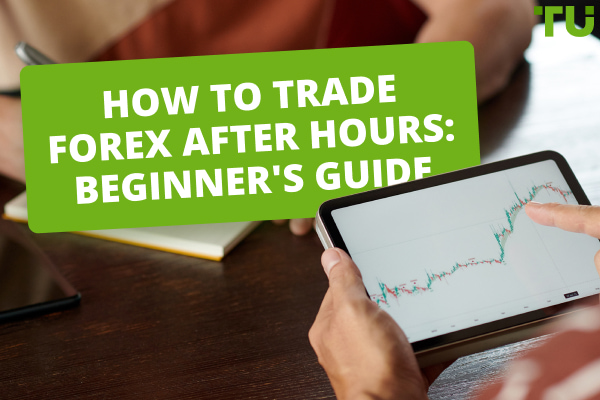TOP 7 Best Leading Indicators in Trading
Best leading Indicators for beginners:
RSI - best for identifying overbought and oversold zones.
MACD - best signal confirming oscillator.
ADX - best for determining the strength and direction of a trend.
Momentum - best for determining the rate of price volatility.
ATR - best for determining the level of volatility.
There are leading indicators and lagging indicators. Leading indicators lead the trend and can be used to determine the oversold and overbought zones. Lagging indicators lag behind the price and are used to confirm a long-term pattern or trend. In this review, we will introduce you to the first category – leading indicators.
What is a leading indicator?
Leading indicators in trading are instruments of technical analysis that measure the degree of price change relative to previous values, allow you to assess the strength of a trend, and help you see areas of possible price trend reversals.
They are used for:
-
Confirming trend movement;
-
Evaluating the strength of a trend;
-
Searching for potential zones, levels of reversal.
Leading indicators provide information about a trend. They can be used to assess the probability of continuation of a strong trend movement, or, conversely, to see an upcoming recession, transition into a flat or breakout from a sideways movement.
Leading indicators are used mostly in short-term and intraday strategies. On long-term timeframes, they give more false signals due to redrawing, due to the drawing formula they turn from leading to lagging ones. Maybe, you are also interested in information about why technical analysis indicators are redrawn.
Pros and cons of leading indicators
👍 The benefits of leading indicators:
•Warn about a change of the trend. Allow you to see indicative zones of a potential trend reversal.
•Have a clear drawing logic. Basic indicators have an open code and clear formula. The code can be modified into any unique tool.
Leading indicators are often used in Forex to set goals and manage risks. When an indicator breaks out of the overbought zone, a Take-Profit order is set in the opposite zone. The Stop Loss is pulled up to the breakeven level on the edge of the overbought zone.
👎 Cons
•Give less accurate signals compared to lagging indicators. For example when an oscillator is in the overbought/oversold zone, it indicates a warning of an imminent trend reversal. However, the indicator does not provide an accurate idea of when it will happen and for how long it will stay in that zone.
•There is redrawing. The formula of leading indicators most frequently includes a price of the current candlestick that hasn’t closed yet. Changing the price online automatically changes the indicator line. This is critical in scalping strategies, where reversal of the oscillator is the signs – after redrawing, the reversal disappears and the main movement continues.
The drawbacks of leading indicators are mitigated by additional filters, for example, additional indicators, a search for a strong movement on longer timeframes.
Top 7 Best Leading Technical Analysis Indicators
The majority of oscillators are considered leading indicators. Although there are opinions that oscillators are also essentially lagging indicators, they still provide an opportunity to predict the future price behavior at least in the near future. In trading strategies, they are considered indicators that confirm the main signal, i.e. the signals that complement trend indicators. Let us introduce the best of them.
RSI (Relative strength index)
Relative Strength Index is an oscillator that measures the speed and magnitude of price changes. The close prices of the previous and current candlesticks are compared, showing the price momentum. It is located under the price chart. It is displayed on a scale of zero to 100. Zones above 70 and below 30 are the overbought and oversold zones respectively.
Things to know about the indicator:
-
Use cases. The indicator works well on timeframes from H1 for any currency pair. It is not desirable to use RSI in a flat movement of the price.
-
Calculation formula. The indicator is calculated in several steps. First, the range of positive and negative price change is calculated through comparison of the Close prices of two latest candlesticks. The result is leveled by SMA, after which the indicator value is calculated.
-
Signals. The main signals include a reversal in the overbought or oversold zones and divergence. Reversal indicates the appearance of a new trend. Divergence means that the price will soon reverse following the indicator.
RSI is one of the oscillators, which provide the biggest number of confirming signals in trending markets.
MACD (Moving Average Convergence/Divergence)
MACD is a leading momentum indicator that shows the relationship between two moving averages of an asset’s price. It is located under the price chart. It is drawn as a histogram with columns placed above and below the zero level. Also, a line is added to the indicator chart that overlaps the histogram.
Things to know about the indicator:
-
Use cases.
-
Calculation formula. The indicator is based on the difference between exponential moving averages of different periods, which are converted into a histogram and a signal line. The signal line is a simple moving average of the MACD.
-
Signals. MACD crossings with its signal line, divergence, a significant change in the height of the histogram columns and the nature of the smoothness of the change. The general meaning of the signals is defining overbought and oversold zones, as well as the deviation of the current price from its average values (difference between moving averages of different periods).
MACD is one of the most frequently used oscillators in trading strategies. It is interesting in terms of the number of signals that are easily found and interpreted in the trending market. It works both in a market with a trend or in a flat.
ADX (Average Directional Index)
Average Directional Index is a leading indicator in the Forex market that combines the properties of a trend measuring instrument and an oscillator. It is located under the price chart and consists of three lines: the main line and two accompanying lines (+Di, -Di). Signals of the main and accompanying lines are often considered separately, but their coincidence speaks of significance.
Things to know about the indicator:
-
Use cases. Any currency pairs, including crosses. It is often used to determine the moment when the price exits the flat.
-
Calculation formula. The indicator has a step-by-step formula for calculating accompanying lines, which then form the basis for calculating the main line. The formula includes High, Low and EMA values.
-
Signals. The main line shows the strength of the trend regardless of its direction. If it moves up, the upward or downward movement accelerates, and the body of candlesticks grows. The range of movement of the line indicating a strong trend is 40%-60%. Crossing of accompanying lines and their location relative to each other indicates the direction of the trend.
The indicator is considered to give false signals, but if you learn to interpret the signals right, ADX can be used as the main indicator.
Momentum Indicator
Momentum is a classic leading oscillator that shows the speed at which the price is changing over a fixed period of time. On the chart, it is displayed under the price as a line without a fixed range of movement.
Things to know about the indicator:
-
Use cases. As an additional confirming indicator on any markets, including stock and cryptocurrency markets. Timeframe selection depends on the results of testing.
-
Calculation formula. The difference between the close price of the current candlestick and the Close price x number of days ago.
-
Signals. Main signals: reversal at visible abnormal extremes and divergence. Since the indicator compares Close prices, it is within the range if the price moves smoothly. If the indicator moves beyond the range or reverses indicates an overbought/oversold signal with trend reversal. Crossing of the median level by the indicator indicates an additional confirming signal.
The advantage of the indicator is the clear logic of how it works. The main task is selection of settings parameters, which largely depends on the asset volatility. The longer the period of increased volatility, the more displaced extreme the indicator will draw.
ATR (Average True Range)
ATR is a trend oscillator that is considered a leading indicator. It is used to measure market volatility (average true range of prices). It is located under the price charge as a line without the fixed range of movement.
Things to know about the indicator:
-
Use cases. It is used on any market and timeframe. It is excellent for preliminary analysis on timeframes from H1.
-
Calculation formula. Three formulas are used to calculate the indicator: the difference between extremes of the current candlestick, the modules of the differences between the current High price and the previous Close, the current Low price and the previous Close. The maximum value of the three leveled by MA is taken into account.
-
Signals. Main signal: growth or decline of the indicator values relative to the previous values. ART growth when the price passes up to 30% of its range is a signal to open a position. To determine the visual range of the average volatility, the scale of the chart is reduced. The indicator does not indicate the points of a possible position opening.
ATR is often used as an additional indicator in the ‘several screens’ strategies. For example, if the daily timeframe shows average volatility confirmed by a calculator, the distance the price has already traveled inside the day at the time when the signal appeared is measured. That’s how Take Profit targets, possible pivot points and Stop levels are determined.
CCI (Commodity Channel Index)
Commodity Channel Index is a leading oscillator used to determine the overbought and oversold zones. It can be used to determine the areas of a trend fading with a subsequent reversal. The indicator is a line under the price charge. The indicator has a range from -100 to +100. Going beyond these zones indicates that an asset is overbought or oversold.
Things to know about the indicator:
-
Use cases. The indicator can be applied to any asset. It is advisable to set a timeframe from M30 to avoid the influence of price noise. The period is usually set by the number of working days. For example, for medium-term strategies on a daily interval, it is a period of 10, equal to 2 weeks. For intraday strategies on an hourly interval – 24.
-
Calculation formula. There are several steps for calculation of this indicator. First, the Typical Price is calculated by the formula of the arithmetic mean of Max, Min, Close prices. Then the moving average is calculated. The final value of CCI is calculated as the difference between the Typical Price and the moving average to the average deviation multiplied by a constant.
-
Signals. Main signal: indicator reaching an overbought/oversold zone. In swing trading, crossing of the median zero level by CCI can be used as a confirming signal. This may mean that a prolonged correction is turning into a new trend.
CCI is one of the most convenient indicators thanks to the clearly drawn edge levels of the range. It is often used together with RSI.
OnChart Stochastic
This is a modified version of the classic stochastic oscillator that works by the same principle, but is drawn differently. OnChart Stochastic is drawn directly on the price chart. It forms a channel that acts as support and resistance levels. Also, two lines are plotted on the chart – the main one (moving average) and the signal (stochastic curve).
Things to know about the indicator:
-
Use cases. The indicator can be used for currency pairs. It is used for intraday strategies as a trend confirming signal. It can be the main signal for channel trading strategies.
-
Calculation formula. Calculation formula of stochastic lines is the same as the formula for the stochastic oscillator.
-
Signals. The middle line of the channel determines the type of the trend. If the price is higher than this line, it is an upward trend, lower – downward trend. Signals of the main and signal lines are interpreted in the same way as the signals of the classic stochastic indicator.
OnChart Stochastic is convenient from the visual standpoint, as it is drawn on the price chart. Its second advantage is building a flexible channel. The indicator is not only a leading oscillator, but also a channel instrument.
Should I use leading indicators?
Yes. Any trading strategy needs to be built on a combined analysis that includes fundamental factors, technical instruments, Price Actions, levels and market psychology. Leading indicators account for over a third of all technical analysis instruments. They are not perfect, but false signals can be filtered by combining several leading and lagging indicators. The indicators in this category – RSI, CCI, MACD, Stochastic, are some of the most frequently used ones in trading strategies.
How do I use leading indicators?
The oscillators are mostly used for preliminary market analysis and confirming a signal in a trending market.
General algorithm of a trend trading strategy:
-
Preliminary market analysis to identify entry points: determining the presence of a flat/trend, the level of current volatility and the range of price movement. If the market is flat, wait for the trend to start. If a trend is visible, leading indicators will tell you what stage it is in.
-
Searching for entry points. Leading indicators provide a preliminary signal. If the indicator is in the overbought/oversold zone, a price reversal is imminent. The main signal is a reversal pattern or breakout of the edge of the flat movement. The confirming signal is when the oscillator turns around and goes beyond the key zones.
-
Searching for exit points. Setting a Take-Profit order next to the closest support/resistance levels; determining targets based on leading indicators: closing the position when the oscillator enters the opposite key zone.
Use leading indicators combined with each other in trading for more accurate signals.
What instruments do leading indicators combine best with?
It all depends on your imagination, personal preferences and the ability to find optimal combinations of trading instruments.
Here are some examples of what leading indicators can be combine with:
-
Reversal instruments: patterns (pin bar, hammer, double bottom or top), Pivot points. The appearance of a reversal signal reinforces the presence of the leading indicator in the overbought/oversold zones.
-
Trend indicators: Oscillators warn about and confirm a start of a new trend.
-
Support and resistance levels. The S&R levels reinforce the signals of oscillators in key zones.
-
Other oscillators to filter each other’s signals. For example, there is a Triple Confirmation strategy that combines Stochastic, RSI and CCI.
To find the best combination of indicators, use strategy testers.
Best Brokers 2024
eToro
eToro offers a forex trading exchange that’s great for beginners. It offers a way for forex traders to test forex trading, portfolio copy trading, and free stock trading.
On eToro, the markets are open from 9:30am to 4pm ET during normal business days (Monday to Friday). The available assets eToro has to offer include:
In terms of forex trading currency pairs, eToro offers over 45, with the most popular ones being EUR/USD, GBP/USD, NZD/USD, and AUD/USD.
eToro’s copy trading feature allows beginner investors to copy the trades of popular investors on the platform. These popular investors are given a risk score that’s visible to all users to mitigate risks.
If their score exceeds a certain point, their trades can no longer be copied by other users. This allows beginner traders to only copy the trades that are most likely to succeed and make profits. To use the copy trading feature, you must invest at least $200 with eToro.
In addition to copy trading, eToro offers a demo trading account that allows you to make mistakes and experiment with different investment strategies without any financial risk.
RoboForex
RoboForex is one of the best brokers for novice traders. The company has been operating in the financial markets for over 10 years and its key benefits include responsibility, comfortable conditions for traders and technology development.
Advantages of RoboForex:
-
Optimal conditions to start trading. The minimum deposit is USD 10. The broker offers cent accounts you can use to test any leading indicator on real online quotes.
-
Wide selection of products and instruments. The broker offers MT4, MT5 and cTrader trading platforms and over 150 CFD assets, including cryptocurrencies, and analytics, where you will find all about starting to trade with minimum risks.
-
Direct access to US and European stock markets. Using the R Stocks Trader platform, you will have access to over 12,000 stock instruments.
-
CopyFx copy trading service that allows you to earn by copying trades of experienced professionals in just a few clicks.
RoboForex is a transparent company with a clear fee schedule that is interested in protecting trader interests. We recommend starting with a demo account.
How to set up leading indicators?
Setting up leading indicators in trading involves a series of steps to configure the specific indicator(s) you wish to use on your trading platform. Here's a general guide on how to set up leading indicators:
Choose the leading indicator. Scroll through the list of indicators and select the leading indicator you want to set up. Common leading indicators include the Relative Strength Index (RSI), Moving Average Convergence Divergence (MACD), Stochastic Oscillator, and more.
Adjust the settings. After selecting the indicator, you'll typically have the option to customize its settings. This includes selecting the time period (e.g., 14 for the RSI), choosing the type of moving average (e.g., exponential or simple for the MACD), and setting overbought and oversold levels (for RSI, for example).
Apply the indicator to the chart. Once you've configured the indicator settings to your liking, click the "Apply" or "OK" button. The indicator will then be overlaid onto your price chart.
Interpret the signals. Leading indicators generate signals based on their calculations. These signals might include overbought/oversold conditions, bullish or bearish crossovers, and more. Study the indicator signals to make trading decisions.
Combine with other analysis. Leading indicators are most effective when used in conjunction with other forms of analysis, such as chart patterns, support and resistance levels, and fundamental analysis. Consider the broader context before making a trading decision.
Before trading with real money, it's essential to practice using the leading indicators on historical data through a process called backtesting. This allows you to see how the indicator would have performed in the past under various market conditions.
Remember that while leading indicators can provide valuable insights into potential price movements, they are not foolproof. No single indicator guarantees success in trading. It's essential to develop a comprehensive trading plan, manage your risk effectively, and continue to refine your strategy as you gain experience.
Leading vs lagging indicators – which is better?
The choice between leading and lagging indicators depends on your trading or analysis objectives and your trading style. Each type of indicator has its advantages and disadvantages, and neither is inherently better than the other. Here's a comparison of leading and lagging indicators to help you make an informed decision:
Leading Indicators
👍 Advantages:
•early signals. Leading indicators generate signals before a trend or price movement occurs. They can provide insights into potential changes in market direction, helping traders enter positions early.
•trend confirmation. Leading indicators can help confirm the strength or weakness of a trend. They are useful for traders who seek to capitalize on short-term price movements.
•risk management. Leading indicators can assist in setting stop-loss orders and take-profit levels, enhancing risk management strategies.
👎 Disadvantages:
•false signals. Leading indicators are prone to false signals, as they sometimes generate premature indications of a trend change that may not materialize.
•complex interpretation. They often require a deeper understanding and more complex interpretation compared to lagging indicators.
•overtrading. Relying solely on leading indicators can lead to overtrading, as traders may enter and exit positions too frequently based on the frequent signals generated.
Lagging Indicators
👍 Advantages:
•confirmation of trends. Lagging indicators provide confirmation of an existing trend, reducing the likelihood of false signals compared to leading indicators.
•smoother signals. They offer smoother and less noisy signals, making them suitable for longer-term trading strategies and investment decisions.
•simplicity. Lagging indicators are often easier to interpret and understand, making them suitable for traders new to technical analysis.
👎 Disadvantages:
•delayed signals. Lagging indicators generate signals after a trend or price movement has already occurred. This can result in missed opportunities for early entry.
•risk of whipsaws. In ranging or choppy markets, lagging indicators may produce signals that lead to losses due to whipsaws (rapid price reversals).
•limited predictive power. They are not well-suited for predicting trend reversals or sudden market events.
Which is better?
There is no definitive answer to which type of indicator is better because the choice depends on your trading strategy, timeframe, risk tolerance, and personal preference. Many traders use a combination of both leading and lagging indicators to create a more well-rounded trading strategy. Leading indicators can help identify potential opportunities, while lagging indicators can confirm trends and reduce the risk of entering premature positions.
Ultimately, the effectiveness of any indicator, whether leading or lagging, depends on how well it aligns with your trading plan and how effectively you can interpret and use the signals it generates. It's essential to thoroughly backtest and practice with different indicators to determine which combination works best for your specific trading goals.
Summary
Leading indicators in Forex is another group of instruments for a professional trader. There are no ideal indicators, as there are no ideal strategies, recommendations or algorithms of actions that are 100% effective. Everything depends on how you use them. Your success depends exclusively on your knowledge, experience, persistence, restraint, patience and desire to achieve your goals. Experiment with various combinations of indicators and their settings, use other instruments, develop your intuition, believe in your capabilities and you will succeed. Good luck with trading!
FAQs
What makes leading indicators inferior
There are no ‘good’ or ‘bad’ indicators in trading. Every indicator has its own purpose. The effectiveness of indicators depends on settings customized for a specific asset, timeframe or trading session; on the current market situation; on the ability of a trader to recognize signals. Leading indicators allow you to see several steps ahead, but they are not perfect, and therefore are used only when combined with other instruments.
For what assets can leading indicators be used?
Mostly for currency pairs. Patterns are easily broken by the actions of market makers in the cryptocurrency market, with psychological factors playing the key role. At the stock market, fundamental factors and financial performance play an important part. In the Forex market, countries are interested in keeping the balance. Currency prices move within a controlled range, which makes it easier to find overbought and oversold zones.
What should I do, if I found a good leading indicator online, but the broker’s platform does not have it?
First, ask your broker if it is possible to add custom indicators to the platform. If it is impossible, perform the analysis on the platform where such an indicator is available and open positions with your broker. Second, find out which platform such indicator was developed for. It can be rewritten for the platform you are using. For example, if you are using MT4 and found an indicator for cTrader, you can go to the MQL5 website, and have the indicator rewritten for MT4.
How do I choose indicators for my trading strategy?
Through testing using a demo account. You are the only one who knows which trading style is the most comfortable for you. Here are several tips for novice traders:
Start with testing basic indicators; some of them were described in this review. Their signals are analyzed in detail online.
Initially, strictly follow the recommended settings, principles of use and signals. Subsequently, you will learn to quickly read the indicator.
Combine leading indicators with trend instruments and patterns.
Do not rush to overload the chart: 2-4 indicators of different types are enough to indicate a trend and filter out false signals.
Team that worked on the article
Oleg Tkachenko is an economic analyst and risk manager having more than 14 years of experience in working with systemically important banks, investment companies, and analytical platforms. He has been a Traders Union analyst since 2018. His primary specialties are analysis and prediction of price tendencies in the Forex, stock, commodity, and cryptocurrency markets, as well as the development of trading strategies and individual risk management systems. He also analyzes nonstandard investing markets and studies trading psychology.
Dr. BJ Johnson is a PhD in English Language and an editor with over 15 years of experience. He earned his degree in English Language in the U.S and the UK. In 2020, Dr. Johnson joined the Traders Union team. Since then, he has created over 100 exclusive articles and edited over 300 articles of other authors.
The topics he covers include trading signals, cryptocurrencies, Forex brokers, stock brokers, expert advisors, binary options. He has also worked on the ratings of brokers and many other materials.
Dr. BJ Johnson’s motto: It always seems impossible until it’s done. You can do it.
Mirjan Hipolito is a journalist and news editor at Traders Union. She is an expert crypto writer with five years of experience in the financial markets. Her specialties are daily market news, price predictions, and Initial Coin Offerings (ICO). Mirjan is a cryptocurrency and stock trader. This deep understanding of the finance sector allows her to create informative and engaging content that helps readers easily navigate the complexities of the crypto world.












